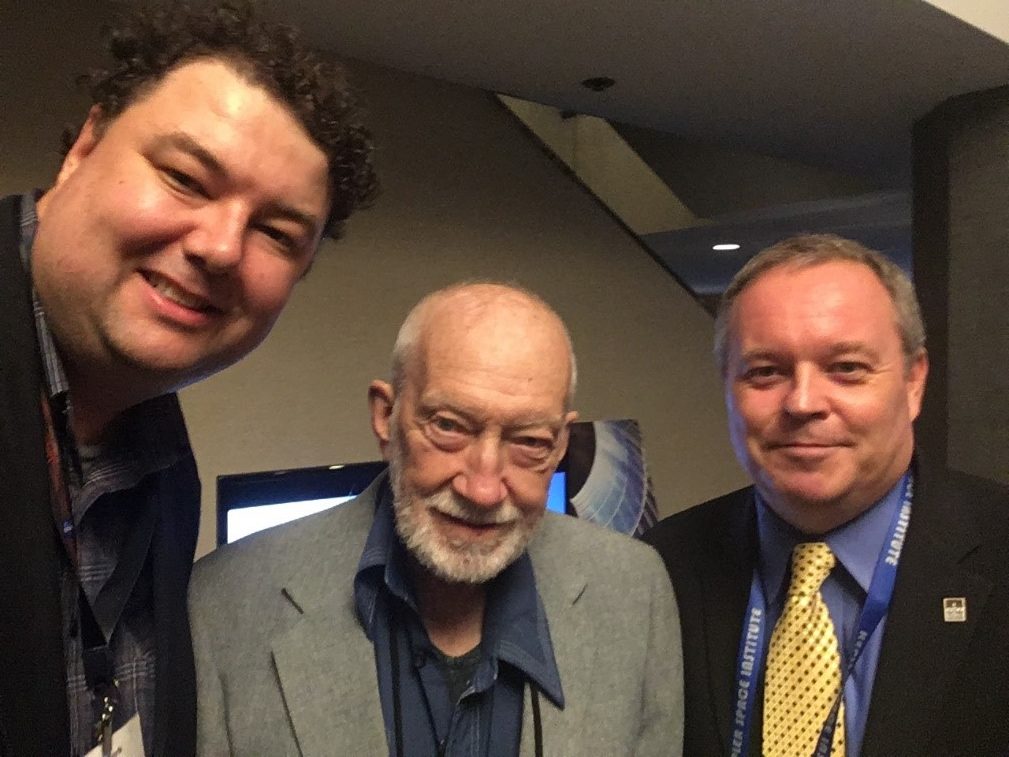From “A Primer on The Moon Society” by James L. Burk, published in 2018 as part of the book A Pioneer’s Guide to Living on the Moon by Peter Kokh, and updated again in 2020 as part of the sequel.
The history of the Moon Society started with a humble post on the GEnie service in 1994, which was titled “Anybody wanna talk about a commercial moon base?” This discussion post was made by Greg Bennett, a NASA engineer who later worked as a manager with several aerospace companies. A few others joined the discussion and together they founded The Lunar Resources Company, working on a commercial moonbase plan which Greg had already dubbed The Artemis Project during his own private planning.
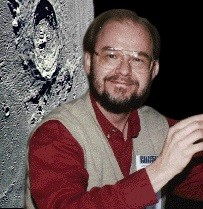
The discussions on GEnie quickly grew, and several new discussion subcategories were created and organized by Greg and Nic Grabien; these later became the outline used by the (still online) Artemis Data Book. Around this time, Dana Carson became involved and donated space on his personal web server, becoming the first Webmaster for the Artemis Project.
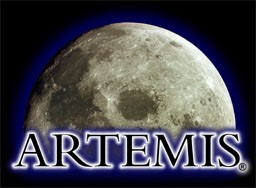
In March 1994, Greg and Marianne Dyson presented the Artemis Project at Norwescon, and later that year several others held a conference in Irvine, California to further organize, and The Artemis Society International was formed to help promote and develop the Artemis Project. In late 1994 and early 1995, both the Lunar Resources Company and ASI were formally incorporated in Texas and Alabama, respectively.
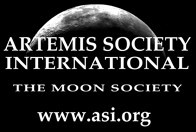
The effort continued to grow and was presented at several conferences in the late 1990s including the World Science Fiction Convention, the American Mensa National Gathering, and the National Space Society’s International Space Development Confernence.
In 1996, a program called Future Fantastic was produced by the BBC and aired in the US on the Discovery Channel, featuring actress Gillian Anderson as the host. She starred as Dana Scully on The X-Files, which was one of the most popular television programs at the time. Midway through the first hour of Future Fantastic, Gillian Anderson described the “Lunar Renegades: Space Enthusiasts, Aerospace Workers, and Science Fiction Fans, known collectively as The Artemis Society” and their “Ambitious plans for the first permanent base on the Moon.” The Artemis Society members (who were attending the Artemis ’96 conference in Houston, Texas) were shown on camera, and Greg discussed The Artemis Project: “Our job is like that of the Pilgrims: To go there, stay, build a community, and build an environment where people can live; build houses, hotels, farms and things. If everything goes well, we can probably land our exploration base in about 8 years [by 2004]. Maybe 10 years after that [2014], we would have built to the point where we are actually doing tourist flights.” (Dates in brackets added by me.)
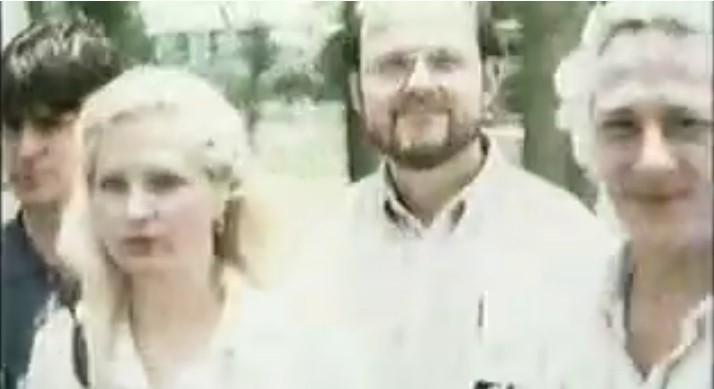
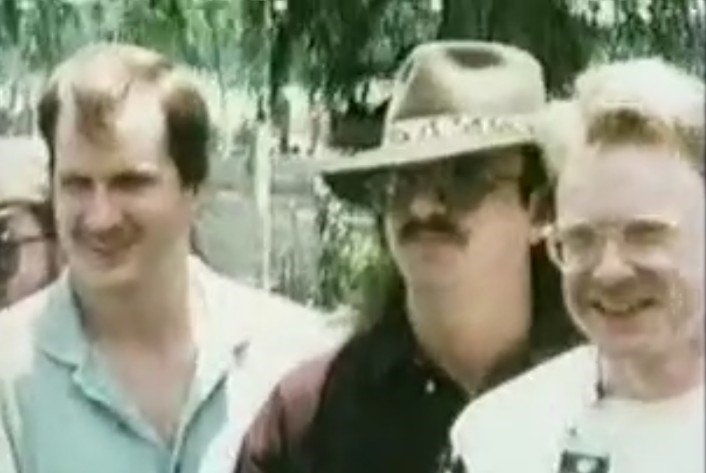
I’ll never forget watching this program on live television in 1996 and through it being made aware of the Artemis Project and space advocacy overall. A couple years later I met Greg, Randall, and others at the 1999 International Space Development Conference. I began contributing my technical skills to the Artemis Project and the Artemis Society through their Electronic Communication Technical Committee (ECTC).
The Artemis Project plans continued to be refined and more public outreach was done. This poster was created:
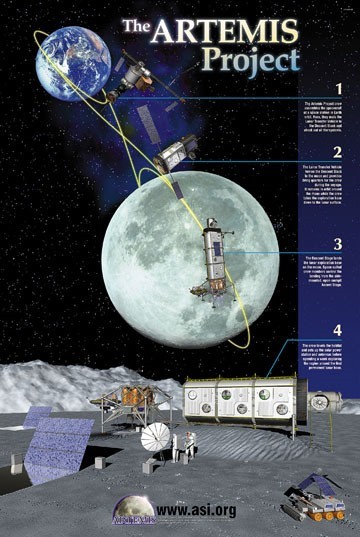
History of the Moon Society II: The Organizing Conference
In July 2000, in a conference center ballroom at Caesar’s Palace resort in Las Vegas, the leaders and key members of TLRC and the Artemis Society International gathered to form a new organization. We wanted to appeal to a wider, mainstream audience and be more inclusive of all aspects of lunar research. During that balmy afternoon in a comfortably air-conditioned room in a glittering city built in the wasteland of one of Earth’s deserts, we met to write bylaws and begin organizing The Moon Society.
The first officer slate for The Moon Society had Gregory R. Bennett as President, James L. Burk as Vice President and Webmaster, Robert S. “Scotty” Gammenthaler as Treasurer, and Rhoda Bryant as Secretary. Board members included Randall Severy (who was also elected as Chairman), Greg, Scotty, Dana Carson, and Ian Randall Strock.
During the later part of the conference I showed the first version of the Moon Society website, which I had designed & developed prior to the conference. It included a Current Phase of the Moon “applet” and information on the Society and our future plans.
Our first major project was to be Project Leto, an effort to build a lunar analog base, research center, and tourist attraction in Las Vegas, near where Greg was working at Bigelow Aerospace. While some initial planning work was done, those plans never came to fruition.
History of the Moon Society, Part III: The Peter Kokh Leadership Era
Greg stepped down from the President office in 2004, and Peter Kokh ran for and won the Presidency. Peter had been the chapter lead of the NSS Milwaukee chapter, which he also branded The Lunar Reclamation Society and starting in 1986 he published the Moon Miners’ Manifesto newsletter.
Under Peter’s leadership, the Society was revitalized. We redesigned our website, setting up our first blog (which Peter and others kept fresh with great content). In 2007, we founded the Lunarpedia wiki (as well as Marspedia and a couple others.) We also did some video projects which were posted on the early Youtube site, and contributed to several other online and print publications.
We also became an affiliated organization with the National Space Society (NSS) and organized the Moon presentation tracks at the NSS’s International Space Development Conference. We grew our Board of Advisors and presented awards at the ISDC conference to lunar scientists and advocates of lunar settlement.
History of the Moon Society, Part IV: The 2010s
Peter retired from the Moon Society and retired from publishing the Moon Miners’ Manifesto in 2017. We voted to make him President Emeritus in 2018.
Our next President was Ken Murphy, an independent financial consultant and lunar settlement advocate. Under Ken’s leadership, we organized a Lunar lava tube exploration plan which used robotics, and created concepts for solar sails for Lunar communication satellites. We also continued to speak at conferences and assisted the NSS with the Moon track at ISDC.
When Ken became too busy to assist with day-to-day work, he took on a Board seat, and Michael Mealling (who was part of the Artemis Project and an officer for the Moon Society in the early 2000s) became our 4th President. Michael is the co-founder of Masten Space Systems, the CEO of Waypaver Foundation, and the COO of Starbridge Venture Capital. He was active in the Artemis Society International during the 1990s and is a founding member of the Moon Society.
I rejoined the Society as Vice President (filling a vacancy) in January 2018. Immediately prior to that, I had been working to revitalize the Marspedia wiki by forming a partnership between the Moon Society, the Mars Foundation, and the Mars Society (where I’ve served as IT Director since 2011).
The 2020s and The Future
Under Michael’s leadership, The Moon Society has steadily continued to gain momentum. We modernized our membership infrastructure and online presences. We brought on new volunteers to assist with tasks. We have taken on new projects and initiatives and brought older ones to the forefront.
As I write these words in September 2020, we have made several significant accomplishments this year, and the year isn’t over. Not even the global pandemic has slowed down our progress!
At the beginning of the year, the Moon Society acquired the assets of The Lunar Resources Company, which also included all intellectual property for the Artemis Project. At a board meeting in March 2020, the Moon Society voted to officially merge with both T.L.R.C. and the Artemis Society International, bring our history full circle. The child organization has now subsumed its parents and it continues the mission and the legacy of all three, and at their fastest pace ever!
In July 2020, exactly twenty years since we held our Founding Convention, we organized the first Lunar Development Conference since 2005, and our first conference since 2000. It was recognized by all who were part of it – attendees, speakers and organizers — as a smashing success.
We organized the fully virtual lunar advocacy conference with several of the world’s top lunar scientists, advocates, businesspersons and activists, and we exceeded our goals for attendance and participation. And, in something that was very important to us, we received the full support and blessing of Rick Tumlinson and the Space Frontier Foundation to carry forward the conference series.
In addition, we are currently working to publish the conference proceedings in a volume titled Return the Moon VII, which will also carry forward the previous nomenclature of those conferences.
At an evening keynote, I presented a verbal and audio-visual form of his primer, and it is available on YouTube, complete with remastered clips of the Future Fantastic episode I mentioned above, which inspired me back in 1996 to pursue space advocacy.
I also announced our first Moon Base Design Contest which will be judged in January 2021 and we hope will result in many high quality and engineering-focused designs for lunar settlements. We plan to widely promote these designs in various media as part of our overall public outreach and educational efforts.
In the next decade, as we return to the Moon, as womankind first visits our closest neighbor, and as humanity collectively unites and sets our sights on destinations beyond, the Society plans to continue strongly advocating for lunar settlement, building our membership and chapter base, organizing and participating in events, and advocating for an actual space mission as a precursor for a lunar settlement.
The future is very bright for The Moon Society.
Ad Luna! To The Moon!
